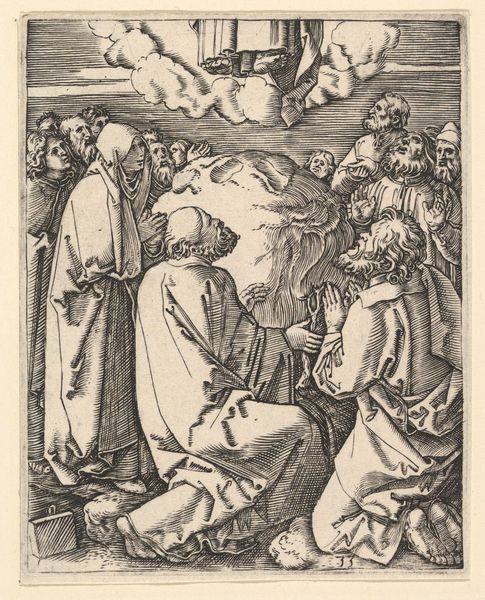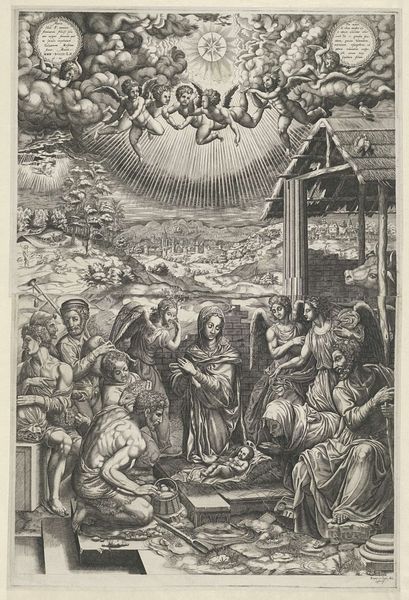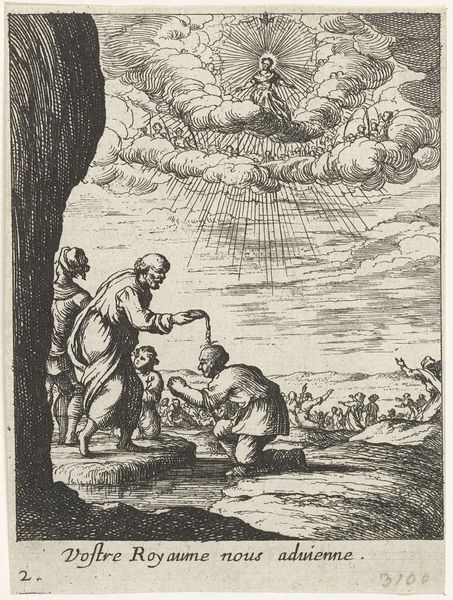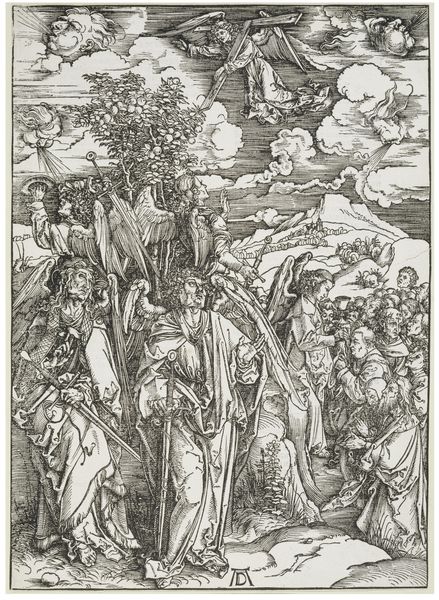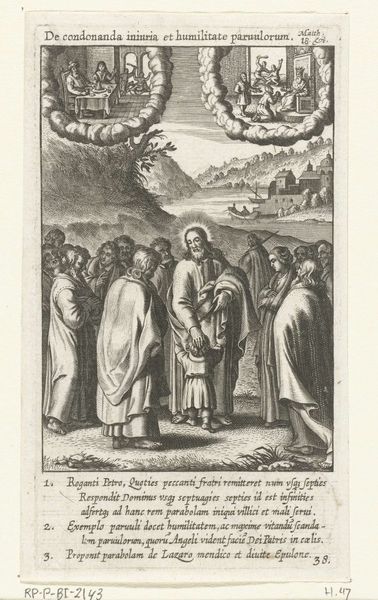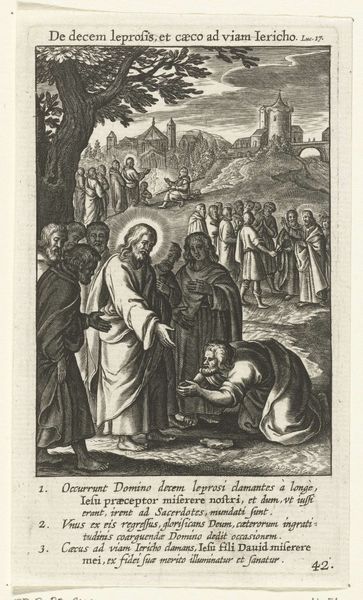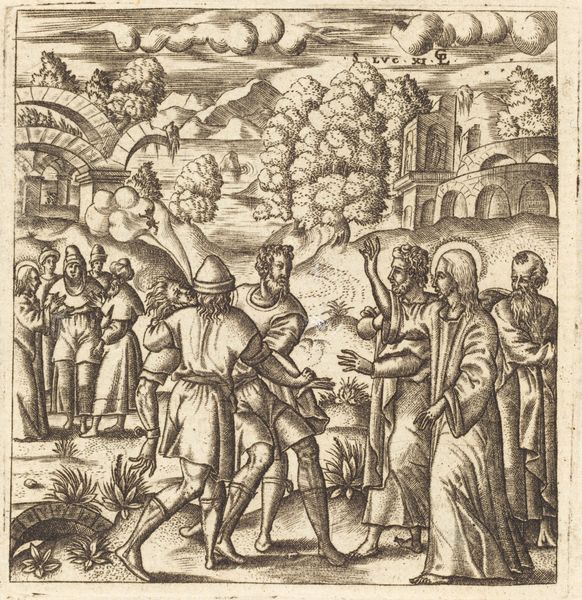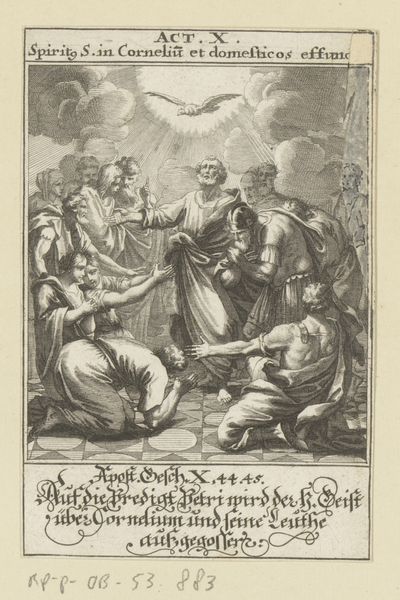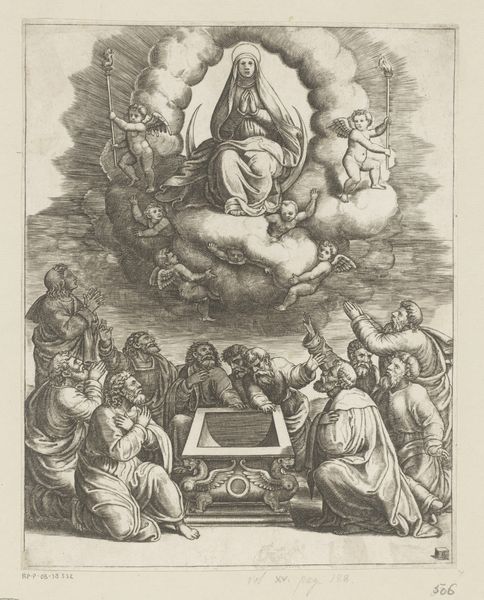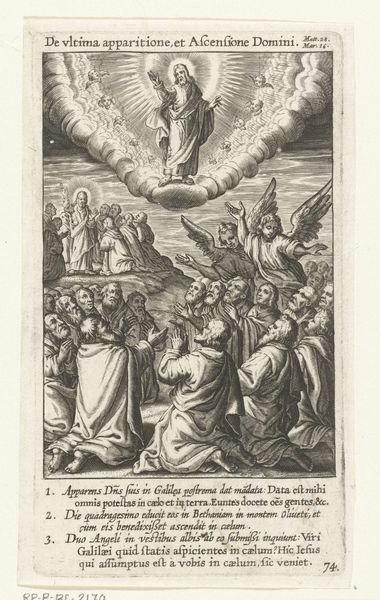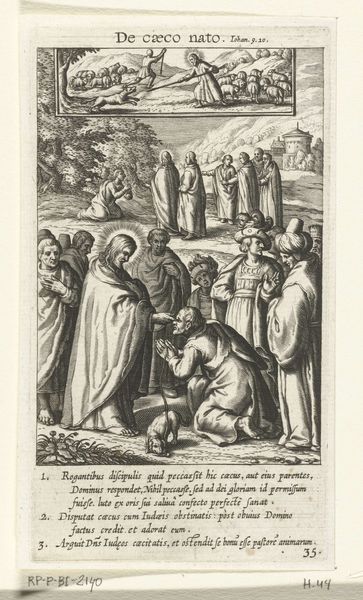
print, engraving
#
baroque
# print
#
pen illustration
#
figuration
#
line
#
history-painting
#
engraving
Dimensions: height 104 mm, width 77 mm
Copyright: Rijks Museum: Open Domain
Curator: Let's take a look at this 1648 engraving by Albert Flamen, titled "Onze Vader in de hemel, laat uw naam geheiligd worden" which translates to "Our Father in heaven, hallowed be your name." What's your initial reaction? Editor: My first thought is how striking the contrast is between the bustling crowd below and the calm symbol of the heavens, complete with emanating light rays. Curator: Precisely! The composition emphasizes this divine interaction within a socio-religious framework. This piece offers a window into the fervent religious atmosphere of the Baroque era. The way the public role of prayer is highlighted speaks volumes about societal expectations and devotional practices at the time. Editor: It's remarkable how the line work, in its stark simplicity, directs our gaze upward. Engraving, with its labor-intensive nature, also points to an investment in accessible religious imagery, for it allowed multiple impressions for distribution to wide audiences. This reflects a period where faith and social engagement were heavily intertwined. How fascinating the consumption and distribution methods influenced social order! Curator: And not just intertwined, but strategically represented! Notice how Flamen positions the praying figures in a structured manner, creating a visual hierarchy that reinforces societal roles within the religious experience. This aligns perfectly with Baroque art's broader aim: to visually assert established power dynamics through evocative imagery. The print would certainly function as more than just devotion material, it served also as a social instruction for collective prayer. Editor: Indeed, and observing the texture created from these many finely wrought lines, the layering effects and patterns—there's almost a meditative rhythm to the visual impact of such deliberate crafting. One can almost feel the weight and feel of the tools used, grounding the otherwise heavenly topic into material existence. Curator: Absolutely. Looking at "Onze Vader in de hemel," we've seen how printmaking facilitated Baroque artistic principles, weaving together artistic expression and religious and social messaging. Editor: And how that affects and reflects the people. An intersection where faith, craftsmanship, and communal engagement find tangible expression.
Comments
No comments
Be the first to comment and join the conversation on the ultimate creative platform.
